I don’t care who you are or where you live, bugging out is one of the most complex scenarios for any prepper.
The huge number of factors that you have to consider, prepare for and execute in an effective bug out make bugging out a logistical and organizational nightmare. More, these factors tend to change as times goes by, due to social and political issues that impact the natural resources and landscape in different areas of our country.
Nevertheless, anyone who knows survival and preparedness will tell you that you need a good bug out plan in place, even if your Plan A is to bug in, sheltering in place in your home.
The first and possibly biggest problem that has to be considered is where to bug out to. You really can’t do any of the other parts of your plan, until you decide where you’re going. Nor can you build a shelter, stockpile supplies or even make an accurate list of what equipment you’ll need, without having that one detail figured out.
Finding a good bug out location isn’t easy. A lot depends on the type of disaster you’re going to have to face. Another huge factor is where you live. Your bug out location needs to be far enough away from your home, so as to not get caught in the same disaster your home is caught in, while being close enough that you actually have a chance of getting there.
This is easier in some parts of the country, than it is in others. Generally speaking, it’s going to be easier to find a bug out location and develop a bug out plan, if you live in one of the less populated states.
The closer you are to the big cities, especially in the high population areas of the country, the harder you will find it to build yourself a bug out plan, with a survival shelter that is isolated enough to protect you from any marauders sweeping the countryside, looking for food and anything else they can get.
Those marauders are the biggest reason to have a bug out plan, with an isolated survival shelter. You can survive many things by sheltering in place, but when it comes down to it, the worst thing you could possibly face is a concerted attack on your home. That is the biggest trigger for bugging out.
Click here to discover how our ancestors survived during harsh times!
Requirements for a Bug Out Shelter
Regardless of what you’re bugging out from or where you’re bugging out to, there are some requirements that any bug out shelter needs. While there may be many different ways of meeting these requirements, finding the ideal location will be narrowed down by your personal situation. Where you live and how well you can get out of Dodge will be the biggest considerations.
Distance
As I’ve just mentioned, you want to be far enough away from home, that whatever disaster causes you to bug out, won’t hit your survival retreat. At the same time, you don’t want your retreat to be so far away, that you can’t get there. A retreat that’s 500 miles away from your home might be great, if you can get there. But if you can’t, all it’s going to do is give you reason to bemoan your choice.
You’ll want to be able to get there on one tank of gas. But you’ve got to consider that in any bug out situation, you’re likely to have traffic problems to contend with. So, you won’t get as far as you normally would on a tank of gas. Therefore, you should keep extra gas on hand, ready to take with you when you bug out.
Just recently Oroville, in Northern California was evacuated due to the risk of the dam’s emergency spillway failing. Since most of the people weren’t preppers, the bug out went just like everyone has said they will, with long lines of traffic creeping along the highway, gas stations out of gas, and people abandoning their cars when their tanks ran dry. You’ve got to make sure you’re not one of those people.
Defensibility
If you’re bugging out because of the aforementioned marauders, you need to take into consideration that you might have to defend your survival retreat. The more difficult the retreat is to access, with the more obstacles in any invader’s way, the better.
At the same time, you’ll need good defensive positions for your family or survival team, with good routes of escape, should that become necessary. While you probably won’t want to abandon your survival retreat unless absolutely necessary, it’s better to do that when needed, than it is to die defending it.
Concealability
An important factor in defending your retreat is keeping people from finding it. A log cabin sitting on the open prairie isn’t very well hidden; but one in the woods can be. Does the location you’re looking at give you the ability to hide your retreat, so that people aren’t likely to find it?
You need to look at this from both short and long distance. Some locations may be hard to see up close, but highly visible from the opposite mountainside. Others will be invisible from a distance, but once you get close, they are obvious. Proper planning and a good location will help you with this.
Of course, a lot has to do with how you build your shelter. If you’re going to build a big fancy log cabin on the side of a lake, with its own dock and an entire wall of glass, you’re going to have trouble hiding it. Going underground helps, as an underground shelter or bunker is harder to see. Even building an underground home, cut into the hillside, makes it hard for others to find you.
Resources
This is probably the single, most important item on the list. If you’re bugging out from home, then there’s a good chance that you’re going to need to be away for a while, maybe even permanently. No matter how much you stockpile, eventually you’ll need to live off the land. Does the location give you that possibility.
More than anything, this means having access to a good water source, fuel for the fire and game that you can hunt. But the soil matters too, as you’ll probably end up planting a garden to augment your food. Building materials may be important as well, especially if you can’t build your long-term shelter ahead of time.
Population
By definition, a survival shelter just about has to be in a low population area. That’s necessary for concealability, defensibility and resources. The more isolated the location, the better.
So a good way to start your search is to look at maps and define low population areas that are reasonably close to your home. Go and visit those areas, to see how well they meet the other needs for survival. When you find those that do, you can start looking for property that might be available.
Nuclear Risk
While the Cold War is long gone, with the thousands of nuclear-tipped missiles that the United States and Soviet Union had ready to launch, the nuclear threat has not gone away. Actually, it’s increased in recent times, with unstable nations joining the club of the nuclear capable. The risk of a nuclear strike, especially by EMP, is higher than it has been in decades, and it looks like it’s going to continue going up.
But a country doesn’t even need to own nuclear weapons in order to create a nuclear strike, all they need are good hackers. Every nuclear power plant in the world is controlled by computers, and most of those are tied into the internet in some way. Regardless of how good the security is, someone can hack it.
Our nuclear power plants have already been “tickled” by hackers, searching out their defenses. There have even been cases where one power plant or another was taken over and controlled remotely. This is extremely dangerous, as all it would take to create a nuclear disaster is for someone who hacked in to bypass the safeguards and let the reactor go wild.
Then there’s the risk of reactors being damaged by natural disasters. We’ve all head of Japan’s Fukushima reactor and how it’s spilling tons of contaminated waste into the Pacific Ocean per day. That sort of thing can happen anywhere, especially with aged reactors, which we’ve got our share of.
Affordability
Finally, you’ve got to look at what your budget will allow you to do. It won’t do you the least bit of good to buy a piece of property to use as a survival shelter, and then lose it, because you can’t make the payments. Don’t assume that whatever disaster you face that causes you to bug out will also make it possible for you to stop making payments. Some disasters might cause that, but others won’t.
Perhaps the worst thing that could happen to any prepper is to have their home or survival shelter foreclosed upon. Yet, if you do something that’s beyond your budget, that’s a very real possibility.
On to the Best Areas
The criteria I just listed actually narrow down the possible places where you or I can have a survival retreat considerably. There are large parts of the country which are just not going to work. While they might be good in one regard, they would be totally ineffective in others.
Take the Southwest, for example. There are many places in West Texas, New Mexico, Arizona and Nevada which are isolated and defendable, with very little nuclear risk. But those areas don’t have much water either. Unless you can find a place in the Southwest and can put in a solar powered well, your chances of effectively creating a survival retreat are minimal.
Other parts of the country just have too much population. Much of the Northeast and the West Coast fall into this category, although there are some areas that are more isolated. Even the most populated states have places you can hide, you just need to find them.
1. The Rocky Mountains
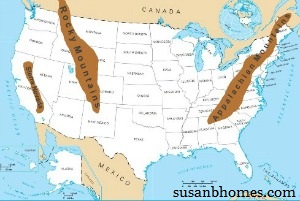
The fact that I grew up at the foot of the Rockies, in Colorado, may have something to do with that.
There’s a rugged romanticism associated with the Rockies, which were the home of Jim Bridger, Kit Carson and many other mountain men, long before ranchers and miners moved in and took over.
I’ve spent a lot of time in the Colorado Rockies through the years.
Today, much of the property is owned by somebody or other and what isn’t privately owned is owned by the government.
Nevertheless, there are many places where you can go and not see another person for miles around. Game is plentiful, there’s water in abundance and plenty of wood for building and a fire.
For that matter, many of the mountain communities would make good places to bug out to, especially if you owned a “cabin” or vacation home in one of them. If you could spend enough time there to become a familiar face, then when the time came to bug out, the community would accept you readily.
The nuclear threat in the mountains would be negligent, although Denver has been a big target for years. But then, if you were going to hide out in the mountains, it probably wouldn’t be near Denver anyway.
The only problem with the Rockies is price. Land in the mountains is expensive. But there’s always the possibility of using public land, bugging out to a state park or national forest. While you couldn’t build a cabin there ahead of time, you could probably cache some supplies by burying them.
2. The Appalachian Mountains
Not as isolated as the Rockies, the Appalachian Mountains are an excellent place to bug out to, especially in West Virginia, Kentucky and the western part of Tennessee.
Many of the people who live in those mountains are survivalist types anyway, who hunt, fish and keep their long guns in the back window of their pickup trucks.
There are actually areas in the Appalachians which are being developed as survival communities.
By developed, I mean that someone has broken up a large tract of land into ten acre lots and is selling it to people who want to build a survival retreat.
Since the area would be populated by like-minded people, there’s a good chance that they would band together to help each other out.
Resources shouldn’t be a problem, with these mountainous areas being just about as good as the Rockies.
Being closer to populated areas will also make it easier to buy the supplies and materials that you need for establishing your survival retreat.
For those who live in the eastern part of the United States, going into the Appalachians is the easiest way to get to an isolated area.
There aren’t too many other areas east of the Mississippi which will offer you as much privacy in a wooded mountain area.
3. The Northwest
When I’m saying the Northwest, I’m not talking about the Pacific Northwest. While Washington and Oregon are beautiful states, they’re also blue states.
That means that you’re more likely to run into government interference and restrictive gun laws. Rather, I’m referring to the states of Montana, Wyoming, Idaho and the Dakotas. These are some of the least populated parts of our country, making them ideal places to survive any social unrest.
There are very few nuclear sites in these states, although there were a fair number of nuclear silos dug into the countryside during the Cold War. Some of those are available and are being converted to survival bunkers. While you might not want to build million dollar survival condos for the wealthy, a silo or control bunker still makes a great survival retreat.
The low population of these states means that you’re unlikely to have problems with marauders or other two-legged vermin. Hunting and fishing are common, with game being plentiful. Actually, this area is one of the few places in the country where I’d say that living off the land is a very real possibility.
4. The Gulf Coast
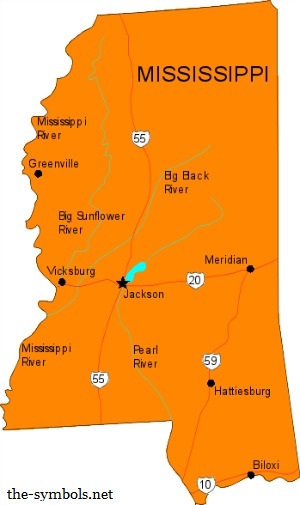
If nothing else, you could always hunt alligator to eat. They’re a bit hard to skin, but the meat is good, especially when cooked Cajun style.
Getting close to the Gulf Coast has other advantages in the food department as well. Much of the world feeds itself from the world’s oceans.
That’s another important source of food to consider as part of your survival plans.
Adding a boat to your gear could make it very easy for you to survive.
For that matter, why not bug out onto a boat and live in the Gulf?
While salt water is not drinkable, it can be made drinkable by distillation.
All you’d need to do is build a still or even a solar still. Distilled water is the purest water you can find.
So, you could get both your food and your water from the Gulf.
5. Parts of Texas
While Texas poses its own challenges for survival, the fierce independence of Texans make it an attractive state to bug out to. There’s lots of open country available and the state is known for not putting up with any nonsense from troublemakers.
Remember the attempted Muslim attack on the Mohammed art show in Garland, Texas, shortly after the Charlie Hebdo massacre in France? Those attackers didn’t get more than a few feet from their car, before they were cut down. Had the people in France been Texans, things would have gone differently.
The big problem with Texas is water. Unless you happen to be fortunate enough to buy property with water on it, you’d better plan on putting in a well, and it might have to be a rather deep one at that. But if you can get a well in, the land is good for survival, with a lot of game. You could live for years on the feral hogs in some parts of the state. They breed so quickly that ranchers can’t keep their numbers down.
The other problem is building material. You’re probably not going to find enough tall trees to build a log cabin. That’s why our ancestors built with adobe in the Old West times. But don’t worry, homes made of adobe can last for over 100 years, much longer than the typical log cabin.
From building a shelter to orientation, there are so many survival skills you can learn from our ancestors who wandered the American lands hundreds of years ago.
Click the banner below for more!
This article has been written by Bill White for Survivopedia.


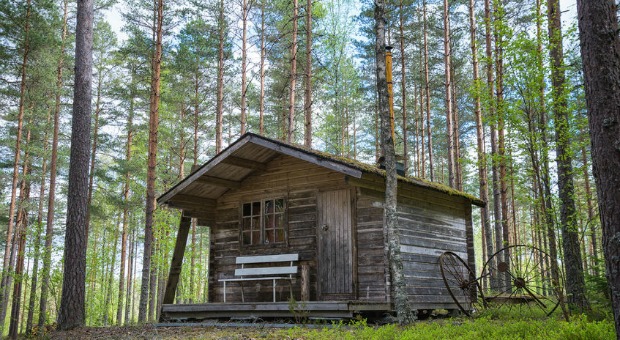
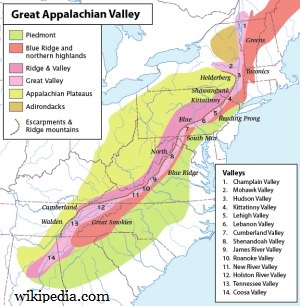


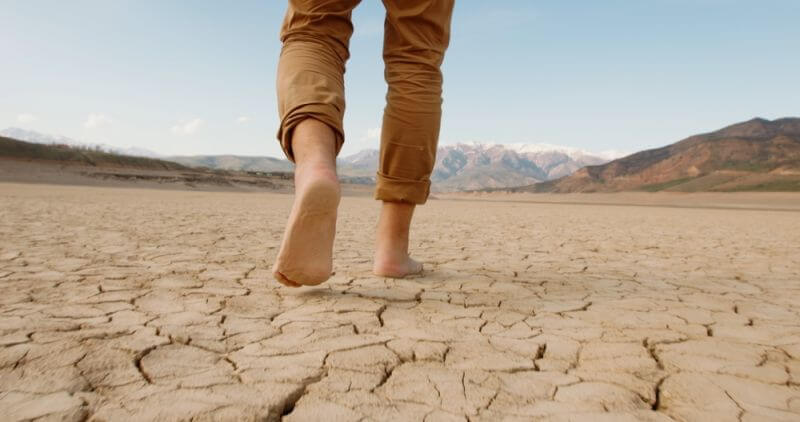
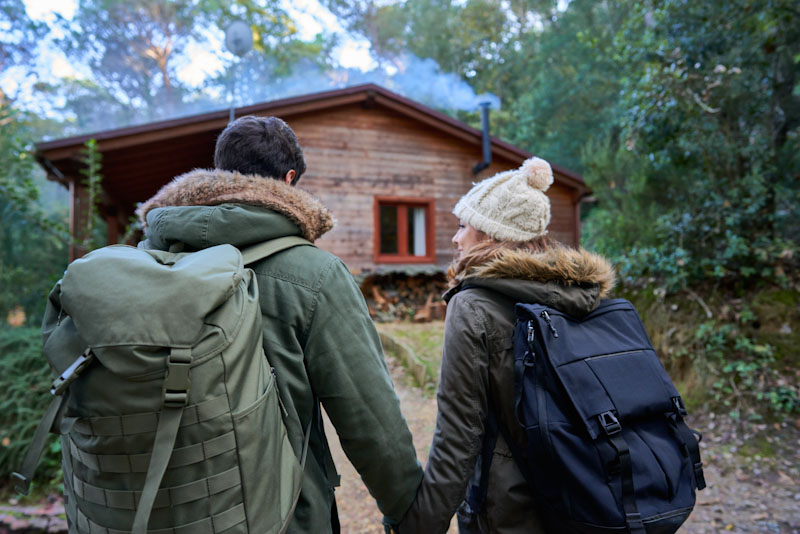
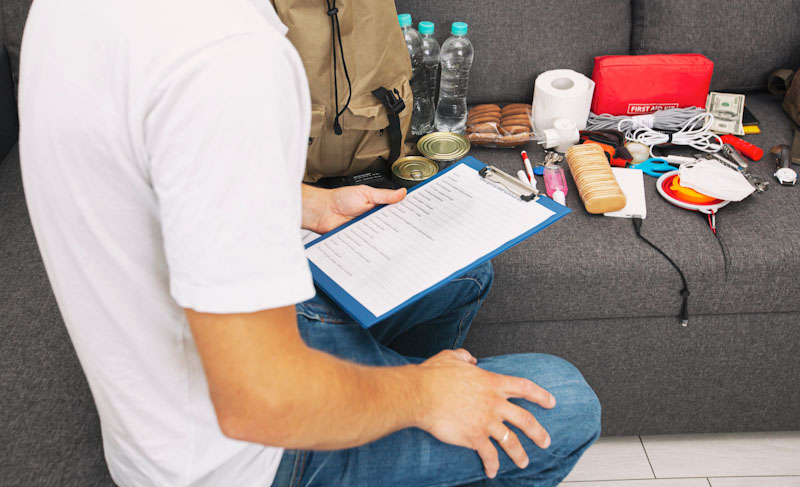


Tom Holmes | March 23, 2017
|
Grew up in the Springs also. Colorado is so beautiful! Now I live in the south…we came here in the 70’s after my dad finished working on Alaskan pipeline said he didn’t care if we ever saw another snow flake we were moving. So that’s how I wound up in the south. Thank you for the article of bugging out in the Rockies I enjoyed it! I always think of Alma Colo. on the way to Breckenridge to bug out in. Or Meeker Colo. also with the mountain goats. Anyway thank you again for the article.
Dojomom | March 23, 2017
|
Thanks for the list. I grew up in, and currently live in rural Texas. I’ve seen floods, hurricanes, tornadoes, livestock die-offs, and drought. I’ll be bugging out in place.
OhMyGoodness | March 23, 2017
|
What general area do you live in? Does it flood?
Anne | March 23, 2017
|
One other potential issue not addressed here is getting to your destination and discovering that somebody else has appropriated it. If you’re really unlucky, the occupant will be convinced that he bought it fair and square. Unless there are neighbors you know who are close enough and willing to monitor and defend your property, this is a real issue. It’s been happening in cities, when homeowners come back from vacation and find they can’t occupy their own house, and there’s nothing that would prevent it from happening in these lovely bugout locations too.
Ray Walthall | March 23, 2017
|
Northeadt texas near texarkana is a good place for less expensive land and good water
Matt | March 24, 2017
|
Glad someone finally mentioned my great state(WV)! People in my neck of the woods don’t bat an eye when I say J.I.C. Why do you have rabbits and chickens? Why are you learning to tan hides? Why are you investing in silver and why do you train in live-fire exercises? I say Just In Case. Not only do my neighbors approve, but many of us believe its prudent at the least, if not necessary. Almost half of my neighbors have been downrange, so when we talk about the dangers of progressive thinking everyone is on the same page.
At the end of the day: might makes right, because my Prophet said so, and because you’re a racist and bigoted so that means I’m better than you and your life is thus forfeit. Are the ways some people seem to rationalize the way they think these days.
NOT US. Were getting ready.
JR | March 24, 2017
|
Unfortunately, Nova Scotia is off the map, and routinely ignored. Outside of Halifax it is well watered, fertile, outside of sample EMP affected zones, will not see hordes of Americans trying to go north in bad times, and Canadians won’t let them across in better times, winters are very moderate, being on the Gulf Stream, etc. Meanwhile, Halifax isn’t large (maybe half million, yet as the historic centre for the whole region, has an international airport, two universities, night life, culture, etc. We own property in Cape Breton – beautiful! – in Cape George Estates outside of St. Peters, right on Bras d’Or Lake, so there is also boating in good times, and in bad times, as you are just a 100 meter canal from the ocean, could get there by boat in a pinch. Fishing, of course, is nonpareil both in Bras d’Or Lake and well as the ocean. Finally, the Canadian dollar is around 75 cents US, so you are getting a good deal for your dollar. While you cannot open a bank account over $10k without going through all the tracking/anti-terrorism/bankster stuff, you CAN buy land, even as an American, with ZERO problem and zero reporting requirements (unless you are collecting rent.)
I might recommend Newfoundland as well, but that is colder, harder to get to in a pinch, and much more expensive to get to in good times. It is also much more remote. We are very pleased where we are!
Lise Stevens | March 24, 2017
|
Northern Arkansas and Southern Missouri are the Ozarks. They are many very small towns and many totally isolated parcels of lands for sale very cheap, probably the cheapest in the US . The jobs are few and not well paid so most everyone has a few farm animals and a garden. The people are resourceful and creative. They also help each other. They watch strangers for a while before getting real friendly, but if you participate in the life of the community, you are soon accepted. There is not much of a winter ; water is plentiful; the ground is rocky but you can still have cattle and grow plants. We have tornadoes, but no flooding, no hurricane, no earthquake. If your house is a dome, you don’t even worry about tornadoes.
I think it is a good place to live when you bug out.
Brian | March 24, 2017
|
I’m sorry, but all these places are actually terrible places to bug out to.
You’re advocating that people who for the most part may have no formal training in survival to bug out into the mou gains the Rockies nonetheless where they would die of exposure in the 1st winter! Why would you avoid the blue states and go down south into the state’s with huge gun base? In the blue states, the people running around looking for resources would be less likely to be armed than down south!
Seriously, how many of us have ever Hunted gator? It’s not that easy! Good luck doing it on foot on an empty stomach!
Come on, you’ve got to do better research on this.
Mahatma Muhjesbude | July 6, 2017
|
Well, Brian, you hit the reality nail on the head. It’s like the article I wrote a while back on bug out vehicles. The best one is the one that gets you to your survival BOL.
The problem with all these so-called Top or best bug out locations is that the never factor in ALL the important Factors that are involved in a good decision.
The first one all these ‘experts’ base their ‘opinions’ on are just basic self extrication from the immediate threat. So naturally they believe that the most isolated and remote locations are the best. Since adverse human contact will always disrupt your own survival plans after the initial catastrophic danger has passed. Many years ago, one could chop out a reasonably isolated lifestyle without anybody finding out about if you watched your ‘comings and goings’, like that infamous mail bomber who eluded authorities for years holed up in an off grid mountain shack. Of course today, nothing is hidden that well from a determined hunter. And of course the government can and will find you anytime they want to focus hard enough on you or your group.
So what’s my point? My point is that there is NO ‘Best bug out place. Especially for us ‘PO folks’. But somewhere where you can go that is prepped and relatively out of harms way, can be much better than where you are when the SHTF… but that also ‘depends’ on the myriad of potential ‘apocalypses’ in the end times bowl of chicken soup.
Since the United States is so big and diverse in everything from climate to populations, the best way to approach the way to decide should be on preparing for the Most Likely disaster for your situation.
That would mean analyzing what would be the worst places to BO to and see if you’re close to them. Remote public lands, especially in mountains might be considerably better than most places if a pandemic plague breaks out but I don’t care for them for many other reasons. Because long term after your immediate supplies were exhausted you’d be spending most of your waking hours just trying to feed and shelter yourself. Not good for surviving in potentially hostile lands.
If you fear major earth quakes, volcanos (there are over A HUNDRED ACTive ones–not just the Yellowstone Caldera in the Western 3rd of the country) or Cat 5 Hurricaines then there are areas of the country which you don’t want to live in. There are plenty apparently good BOL’s around until you find out there’s little rain and no water until you spend 60 thousand for a special deep well, which might be contaminated anyway.
So again, a good BOL is more subjective relative to your personal situation like where you already live and fears.
And how good it really will be depends more on your financial situation than it does on the exact location. l Everything is a trade off, and none is perfect. But some, like mentioned, are really stupid.
Jim Bakken | March 25, 2017
|
You failed to mention one of the safest places. Check out arkhaven and many others have located the places you mentioned but put the Ozark mountains as overall best and give numerous reasons why.
kdonat | March 26, 2017
|
Western Tennessee? Shouldn’t it be Eastern Tennessee and Western part of North Carolina?
Jack | March 28, 2017
|
Gulf Coast would also include north Florida. The temperate climate is conducive to wintering and gardening. Fishing, of course. A kayak or small sailing canoe is ideal for fishing without relying on gasoline or diesel.
Judy Flaherty | May 7, 2017
|
Good point on the climate as for gardening, and using a kayak for transport. Where can a person bug out on the Gulf Coast that no one would find you…..
Jacques Lebec | March 28, 2017
|
I have a tendency to favor places in moderate climates, I was born and raised in Minnesota, the North woods are beautiful. But to be exposed to blizzard conditions could be rough. Good Article!
Sharon Rock | April 3, 2017
|
Sorry, Bud, but you completely left out the middle of the country. What about Minnesota, Nebraska, Wisconsin, Iowa?
steve | February 6, 2018
|
Definetly! If Montana and the Dakotas are on the list then include Minnesota, Wisconsin, and northern Michigan too.
Lanie Bailey | April 22, 2017
|
I lived near Mt Princeton in the heart of the Rockies at 9,000 ft, remote……you BETTER be in great shape, with lots of money. know how to live in BLIZZARDS and I mean white outs, able to fen off mount lions and bears. The people are not as very friendly as Southern people, very liberal, lots of rules and regulations and permits from the governtment to build any kind of structures. Think about it do your research!!!
Axel | May 6, 2017
|
I wouldn’t buy land (paper trail). I would, instead, embed myself deep into pubic lands and use the money, saved from squatting, on more important things. I would take enough stores to see my family through to the next growing season and a vault of seed for crops. I would avoid planting in rows or circles, the typical method, and op for a more irregular method The least populated areas include Wyoming, Colorado, New Mexico, northern Arizona, and parts of Texas. I could go on and on about this. But, I’ll just keep this topical.
Judy Flaherty | May 7, 2017
|
Axel, once on public land, such as deeply hidden in a state park, will you construct a tent and attempt to hide? I’m trying to make a similar plan, I am an older female, armed, trained, and need tips on hiding on public land…if you can answer here. Don’t if you can’t. Thanks
Judy
Pingback:Why Rich People Turn to Preparedness | Survivopedia | June 22, 2017
|
Georgia38 | July 4, 2017
|
Not many know about SOUTHEAST ALASKA. It’s a great place to ride out
the bad times that are coming. P.O.W ISLAND HAS NO PROPERTY TAX. Things cost a bit more, but it is remote with few who would do you harm. All of the panhandle of Southeast Alaska is beautiful, and for the most part everyone is friendly. Just about everybody up there is from some where in the lower 48 so it is not too clannish. It is a rainforest and rain it does, but the winters are mild by northern standards. Fishing and logging are the main jobs, but there are others. Wrangell, AK is a hidden GEM with GREAT people, and the mighty STIKINE River. Etolin Island has an elk herd which is spread out to surrounding islands. There are also moose in this general area. Anyway, you could live off the land with a lot of hard work and a few smarts. It is one of the last places on earth where you can still homestead and live somewhat off the land. By homesteading, I don’t mean free land. That’s gone, and even float houses have a ton of regulations and hoops to jump through. However, Southeast Alaska is out of the rat race, and it is 700 hundred plus miles from the lower 48 by boat or air as there are no roads to most of the Southeast excluding Haines and Hyder. The Alaska Marine Highway is the best way to get your vehicles there, but you can have them barged up. If you go to live, plan on buying a boat. Hope this helps someone out.
terry Jensen | October 4, 2017
|
this is all great but WSHTF 9 out of 10 people in the cities will perish within weeks…you won’t have to go that far out of the way to avoid those that are left. I live in a fairly remote part of the country now and I know that if shit happens I will be just fine and so will the people in this area as we are ALL ranchers and pretty much are on our own now. I go to town 1x a month and I am getting to extend that out even further. I raise most of my own food including meat…what I don’t have my neighbor does and we are all sharing now amongst us. I have meat lambs, eggs and gardens etc….neighbors trade for most anything and we are all pretty much able to take care of any problem out here. We do not expect to have any problems…if so we are ALL 100% armed and we have the practice and aim of good solid ACCURACY
I hate to see my state on your list but never is a problem after a couple of winters most southern folk move on out because the snow is to much to deal with. BTW we still use REAL horse power out here so we have transportation at that level if everything else fails….
jake | March 21, 2018
|
what state do you live in?
Keolu | September 19, 2018
|
Deep East texas in the piney woods. Low risk of flooding, Plenty natural resources -wood, water, and wild game. Very rural even now.